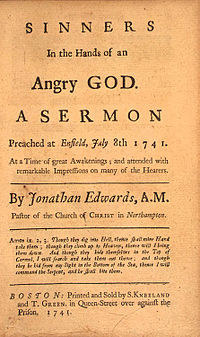
Photo from wikipedia
scholarship has focused on the emergence in early modernity of one or more Atlantic worlds” (1), but the perspective most frequently examined in these essays is limited to the British… Click to show full abstract
scholarship has focused on the emergence in early modernity of one or more Atlantic worlds” (1), but the perspective most frequently examined in these essays is limited to the British Atlantic. One notable exception is Andrew Crome’s essay which successfully moves beyond the English Atlantic to consider the intellectual networks that allowed for Spanish Catholic influence on Protestant eschatology. Crome’s examination of the Jewish Indian theory, which envisioned that Native Americans were the lost tribes of Israel, highlights the place of Judeo-centric eschatology in seventeenthcentury radical religious thought. Drawing on David Armitage’s terms, Crome proposes an approach to the study of “Atlantic eschatology” that is both circum-Atlantic in recognizing “the circulation of ideas which impact upon religious beliefs” (127) and cis-Atlantic in placing the reception of circulated ideas in localized settings. David Manning likewise takes both circumand cis-Atlantic approaches in his essay. Manning situates his study in Reformation Jamaica during the years leading up to and including the 1692 earthquake. He probes how competing confessional groups framed Jamaica’s “wickedness” in relation to their own respective (and metropolitan) piety. In his consideration of the 1690s, Manning adds to the growing body of scholarship that reexamines the complexity and vibrancy of late Stuart religiopolitical culture. The larger series to which the book contributes, “Christianities in the Transatlantic World, 1500–1800,” shares the same editors and includes recent monographs and edited collections by several contributors to this volume. Due to the eclectic nature of the volume, as well as its broad chronological scope, readers will likely find certain essays more pertinent than others. Overall, the collection provides a nuanced reassessment of confessional relationships and lays out a number of promising directions for future scholarship on the process of religious reform in the Atlantic world.
Journal Title: Church History
Year Published: 2018
Link to full text (if available)
Share on Social Media: Sign Up to like & get
recommendations!